The best varieties of onion seeds for greens and a growing algorithm
Most gardeners grow green onions on their plots. Its greens contain many vitamins and minerals. The leaves of the plant are not only healthy, but also delicious. They have a characteristic onion aroma and piquancy, but not as intense as in the case of root vegetables. In summer and autumn, such greens sometimes completely replace ordinary onions.
To achieve high yields, specially designed varieties are chosen for forcing the feather. In this case, the plant will spend energy and nutrients on greens, and not on a turnip. How to choose the right variety and grow green onions from seeds - read on.
The content of the article
Suitable varieties of onions for herbs
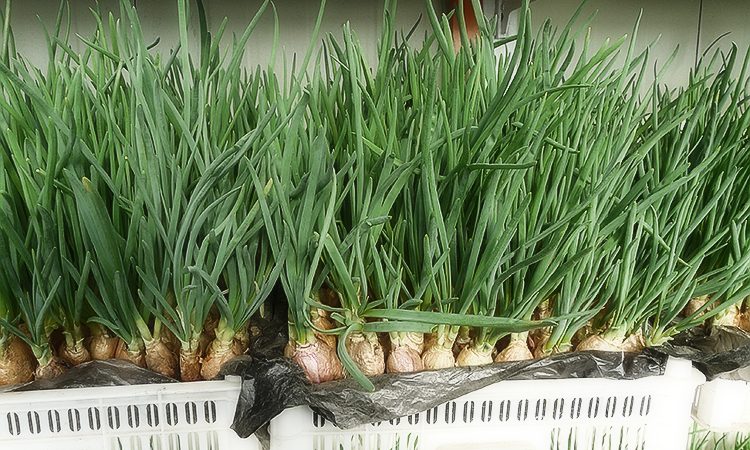
To get a rich harvest of greens, onion varieties are selected specifically for forcing the feather. As a rule, they do not form root vegetables, but have a dense green mass.
There are several varieties of onions that are suitable for forcing a feather. These include:
Batun
Perennial. Differs in large cone-shaped feathers. All greens are the same height. Onion aroma and pungency are pronounced. Feathers are cut several times per season. In this variety of onions, the seed pods must be cut, which negatively affect the taste of the greens.
To varieties batuna for forcing a feather include: April, Baron, Baia Verde, Emerald, Tenderness, Russian size, Seryozha, Russian winter. All varieties are frost-resistant. Their yield varies between 3.5-4 kg per 1 m².

Leek
It has flat, wide leaves that resemble garlic. It has a delicate onion aroma and a slightly pungent taste. Has an average resistance to cold snaps. It is grown only in the garden.
TO varietiesSuitable for forcing a feather include: Vesta, Casimir, Calambus, Sizokryl, Winner, Alligator, Elephant, Tango. The yield varies between 2-3 kg per 1 m².
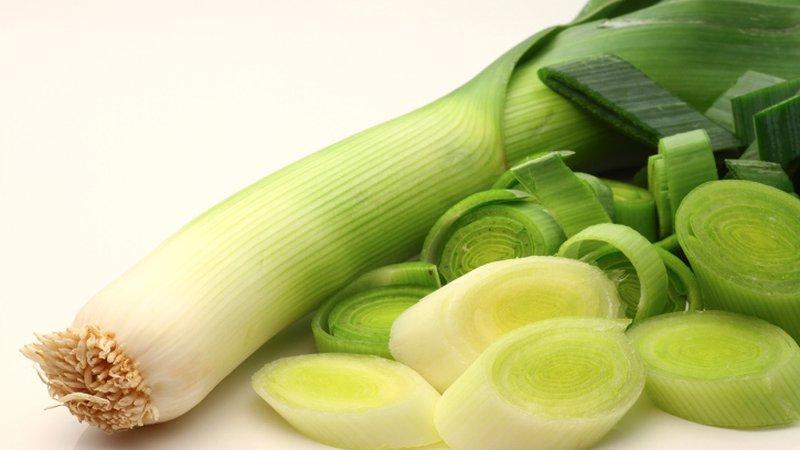
Chives
It has thin tapered feathers that resemble needles. They are tender and juicy, with a slight edge and a characteristic aroma. Feather length - 30-50 cm. Suitable for growing at home and in the garden. It has bright fragrant inflorescences that attract pollinating insects.
All varieties are resistant to cold snaps and immune to disease. To varieties chives, suitable for forcing feathers include: Prague, Bohemia, Siberian, Khibinsky, Chemal, Medonos, Spring. The yield varies between 3-4 kg per 1 m².
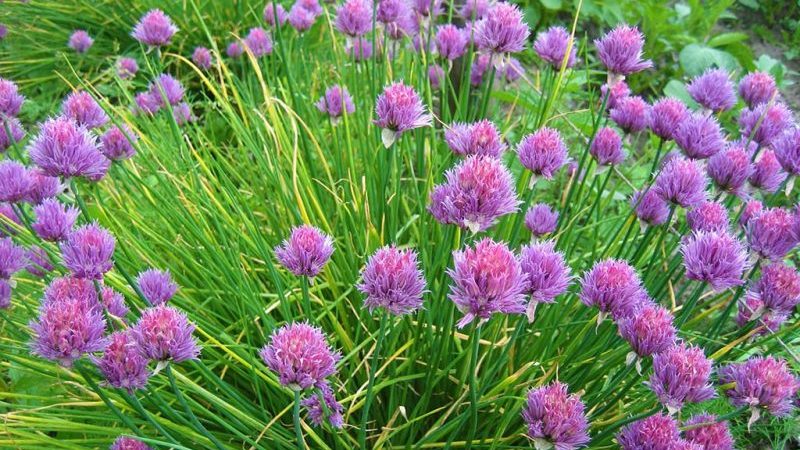
Shallot
Has a delicate onion aroma and a sweet-pungent taste. The feathers are cone-shaped, thicker than that of chives, but thinner than that of a batun. Low frost resistance, average immunity. Productivity - up to 2 kg per 1 m². The following are commonly used for forcing the feather varieties: Ayrat, Cascade, Bonilla, Vitamin basket, Krepysh, Sophocles.
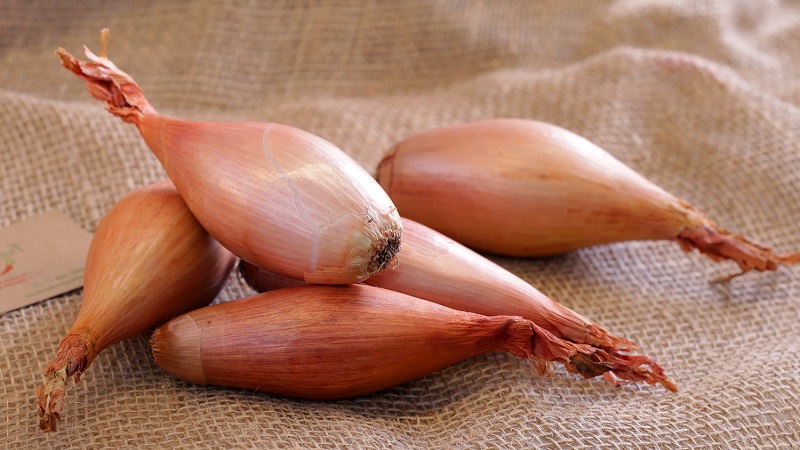
Slime
The leaves are flat, wide, with rounded edges. The aroma is onion-garlic, the taste is spicy-sweet. It releases greens quickly, has a long growing season. It grows in the greenhouse all year round, and in the open field before the onset of cold weather. Popular varieties - Green, Dwarf, Leader, Belarusian, Charm. Up to 3.5 kg of greens are collected from 1 m².
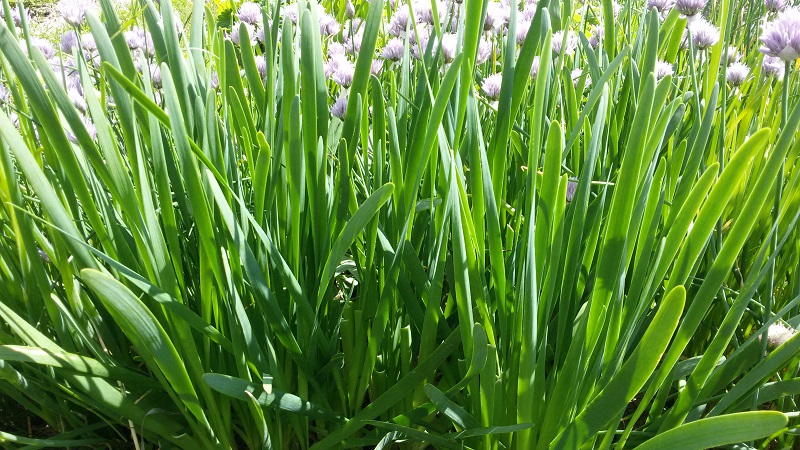
Egyptian, or multi-tiered
The most unpretentious variety... Feathers are conical, thick.Pungent taste, onion aroma. It differs in that at the end of the arrows, not a box with seeds is formed, but small air bulbs. Chelyabinsky, Likova, Memory - varieties used for forcing feathers. The yield varies between 3-4 kg per 1 m².

Dates for planting onion seeds on greens
The question of the timing of planting is only in the case of growing onions in the open field. A frost-resistant culture easily tolerates temporary cold snaps, but stops growth with prolonged frosts.
From late spring to late summer, onion seeds are re-sown at any time. During this period, the temperature does not affect its growth. Some early maturing varieties are planted even in August.
Before winter, onion seeds are sown when the temperature reaches 2-3 ° C. In this case, the seeds will not have time to germinate before the onset of the first frost and will not die from the cold. Only late varieties are suitable for this way of growing onions.
Green onions are grown in the greenhouse all year round. It is most cost-effective to do this from mid-fall to the last month of winter or the first month of spring.
Regardless of the month of sowing, experienced gardeners are advised to pay attention to the indicators of the lunar calendar. It has been proven that plants sown on the correct lunar day take root more easily and have a high yield.
Favorable time for sowing onion seeds for greens in 2020:
| Month | Auspicious days |
|---|---|
| January | 1, 18-19, 27-29 |
| February | 6-7, 14-15, 25 |
| March | 4-6, 13-14, 22 |
| April | 1-2, 10, 18-19, 28-29 |
| May | 15-16, 17, 25-26 |
| June | 3, 12-13, 25-26 |
| July | 1-2, 9-10, 27-28 |
| August | 5-7, 15-16, 24-25 |
| September | 11-13, 20-21, 29-30 |
| October | 9-10, 18, 26-27 |
| November | 5-6, 22-24 |
| December | 2-4, 11-12, 20-21 |
Growing green onions

Although onions are an unpretentious crop, it is important to know the basic rules for growing them. If the rules for processing planting material, soil preparation and plant care are not followed, the plantings will begin to hurt, and their yield will decrease.
Seed preparation
In order to increase the germination of seeds and get strong, healthy plants that will grow quickly and give a good harvest, the planting material is prepared:
- Pre-soaking - promotes swelling of seeds and their rapid germination. Planting material is soaked in water at room temperature for a day. During this time, the water is changed three times.
- Disinfection - reduces the likelihood of infection of plants with infections. The seeds are immersed for 30 minutes. in hydrogen peroxide or for 60 min. in a light pink solution of potassium permanganate. Purchased products (Fitosporin), soda (1 tsp for 1 tbsp of water, soak for 12 hours), aloe juice (diluted with an equal amount of water and immersed seeds for 12 hours) are also used as a disinfectant.
- Growth stimulation. The planting material is soaked for 12 hours in "Epin" or another growth stimulator.
Some gardeners additionally germinate seeds. To do this, they are placed on a damp cloth and covered with a layer of damp material.
Important! For forcing a feather, seeds over 2 years old are best suited.
Soil preparation and sowing
Well-lit areas are chosen for onions. Groundwater on them should not run too close to the surface. It is important that onions and other greens do not grow on the selected beds a year before.
It is better to prepare the beds in advance. For spring planting in open ground, this is done in the fall. If the winter method is used or the crop is planted in a greenhouse, then the soil is prepared a month before sowing the seeds.
The selected area is cleared of weeds and residues of cultivated plants, and then dug up. If necessary, for every 1 sq. m make 4 kg of humus or compost, 25 g of superphosphate and 15 g of urea. The beds are leveled with a rake, mixing fertilizers with the ground.
Onions love slightly acidic soils. If the acidity index is increased (check with litmus test), then for every 1 sq. m make 1 tbsp. ash.
2-3 days before sowing the seeds, the beds are watered with a hot solution of copper sulfate - 1 tbsp. l. on a bucket of boiling water.
How to plant onions
There are 3 ways to plant onion seeds on a feather.
In open ground
In the soil, grooves are made 1-1.5 cm deep. To get a lot of greenery and save space, groups of three grooves are created.The distance between them in each group is 5 cm, and between groups is 15 cm. Seeds are often planted - 1 g per 1 sq. m. Then the planting material is sprinkled with earth and watered with water at room temperature. On cold days and at night, until the first shoots appear, the beds are covered with foil.
Seedling method
This is the fastest way to grow onions. Seeds for seedlings are sown in boxes filled with universal soil to a depth of 1 cm. The plantings are watered and covered with foil. This is done 1.5-2 months before planting in the ground.
Before germination, the room temperature should be 25 ° C, then it is reduced to 10 ° C for a week, after which the onions are grown at room temperature. When the plants grow to 20 cm and 4 feathers appear on them, they are planted in the ground, after cutting off the greens by a third. The onion is buried 4 cm, leaving a distance between plants of 5 cm and between rows of 10 cm.
Growing in a greenhouse
In the greenhouse, onions are grown according to the principle of sowing in open ground (seeds are sown directly to the beds) or by seedling. Then, boxes with seedlings are placed right in the greenhouse, which are transplanted into the beds when they reach 20 cm.
Note! Planting onion sets and large onions is different from sowing seeds. In the first case, the bulbs are planted close to each other.
Features of growing in the open field
In the open field, the gardener culture is given a minimum of attention:
- Watering. The first 6 weeks after sowing the seeds, the beds must be watered. This is done as the topsoil dries out. Watering should not be abundant so that the water does not stagnate. To moisten the soil, only settled water at room temperature is suitable. Further, the onion is watered only during drought.
- Loosening. After watering, the soil must be loosened. Do this carefully so as not to damage the roots. This procedure destroys the earthen crust that impedes full air exchange.
- Weeding. Young onions must be weeded. Weeds interfere with the development of plant roots, gradually leading to their death or reducing productivity. It is convenient to do this while loosening.
- Thinning. After the appearance of 3 true leaves, the planting is thinned out. A distance of at least 5 cm is left between the plants.
- Mulching. It is recommended to sprinkle the beds with a layer of peat or fresh straw.
- Top dressing. Top dressing is carried out 2-3 times during the entire onion growing period. Natural nitrogen fertilizers are suitable for the development of greenery. For example, chicken manure diluted 1:10 with water, silage, ash solution (1 kg of ash per bucket of water).
- Arrows... If the bow has thrown out arrows, they are broken off. They spoil the taste of greens.
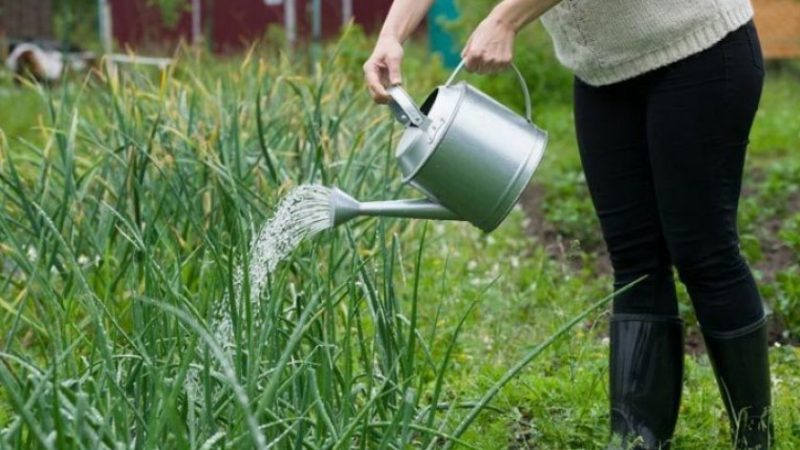
Features of growing in a greenhouse
Caring for green onions in a greenhouse does not differ much from growing them outdoors, but it is important to provide suitable indoor conditions:
- Lighting. Since onions are often grown in a greenhouse during the cold season, when the days are short, it is important to equip it with fluorescent lamps. The greenhouse should be light for at least 10 hours a day.
- Location. The greenhouse is set up in an open, unshaded area to save on electricity required for lighting.
- Heating. In the cold season, onions are grown only in a heated greenhouse at temperatures up to 15 ° C.
- Ventilation. It is important to ensure good ventilation in the greenhouse. Otherwise the roots and greens will start to rot.
Diseases and pests
Even a culture as unpretentious as onion is at risk of infection. The following diseases are dangerous for greens:
- Downy mildew... Small whitish spots appear on the leaves. Over time, they grow and become covered with a purple bloom. Feathers begin to turn yellow and dry out. Black mold or mildew appears on them.
- Rust. Feathers are covered with red raised spots, which turn black over time. Gradually, the plant dies.
These diseases are of fungal origin, which harm exactly onion greens.The infection hibernates in soil or plant debris. To prevent infection, attention is paid to disinfecting the soil and garden tools, observing crop rotation, and proper watering.
It is important to disinfect the seeds and soil before planting onions. Since the greens absorb the chemicals used to treat fungal diseases, such crops will be hazardous to health.
Pests are no less dangerous for the harvest. These include:
- Onion western skulker. Larvae gnaw yellowish passages in onion feathers. Adult insects go to the ground, where they lay new eggs. It is impossible to get rid of the pest that has affected the plants. Prevention is considered to be soil disinfection, observance of crop rotation, and removal of plant residues.
- Onion moth. Leaves begin to turn yellow, dry and wither. The larvae eat the onion inflorescences. Spraying with a solution made from a bar of laundry soap and a bucket of water will help fight the pest.
- Onion fly. Lays the larvae in the roots of the plant. Leaves become covered with white spots, stop growing, turn yellow and dry out. Adhesive tape and a decoction of wormwood will help protect the planting from flies.
Advantages and disadvantages of growing greens from seeds
There are advantages to growing onions from seeds:
- low cost of planting material;
- high productivity;
- more useful and tasty greens (all nutrients go into the feathers);
- less chance of infection;
- the duration of the return of the crop.
The disadvantage of seed growing is the duration of seed germination. The first crop is harvested no earlier than 2 months later.
Reviews
Reviews of seed onion cultivation are mostly positive. This method is used by most gardeners.
Irina, Zheleznogorsk: «I grow green onions only with seeds. In my garden, there is a perennial bramble that I sown sometime in winter, and a shallot that I plant every year. I use a mixture of silage with the addition of ash as fertilizer. I cook from nettle, which I insist in water for at least a month. I don't use any chemistry. Be sure to hang some sticky tapes near the beds. I have no problems with diseases and pests. Already in May I cut off the onion feathers of the batun. "
Igor, Lipetsk: “I grow chives from seeds, I like its rich aroma and slightly spicy taste. I plant near the garden with cucumbers to attract pollinators to the latter. I came across a description of a slime in the store and planted it last year. Delicious onion with a light garlic flavor. It goes well with meat and salads. "
Conclusion
Growing onions from seeds is a lengthy but uncomplicated process. This culture requires a minimum of attention from the gardener, being unpretentious. At the same time, it is enough to plant many varieties once so that they please with the harvest for several years.
This growing method has many advantages. Indeed, it is in this case that it will be possible to get the most abundant harvest that can be harvested several times per season.